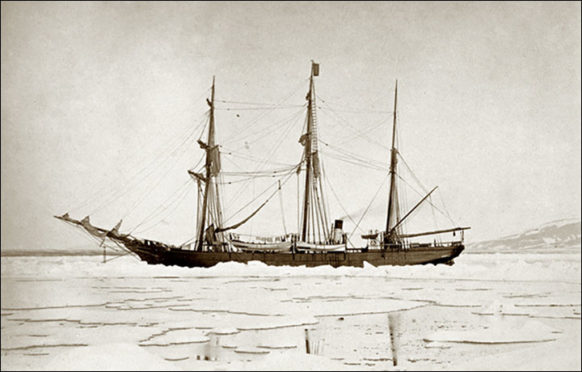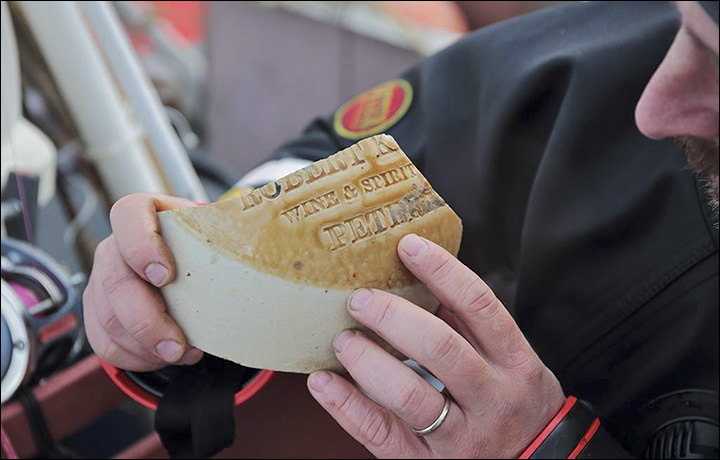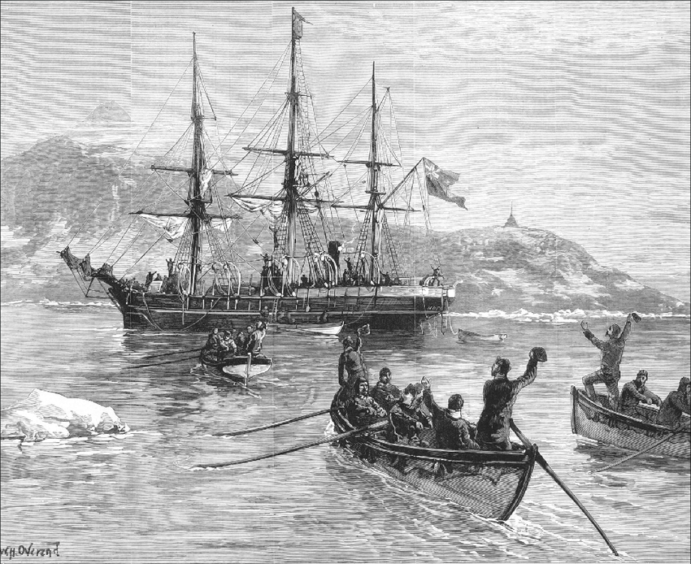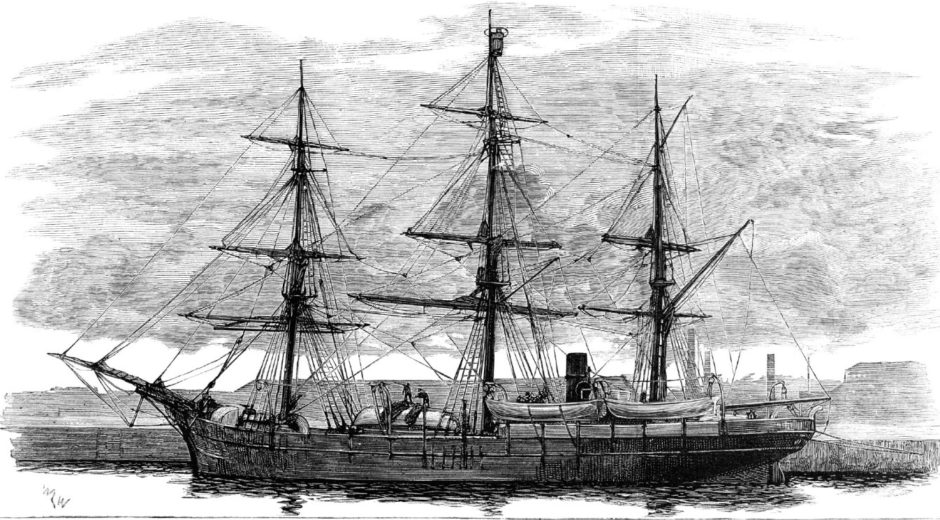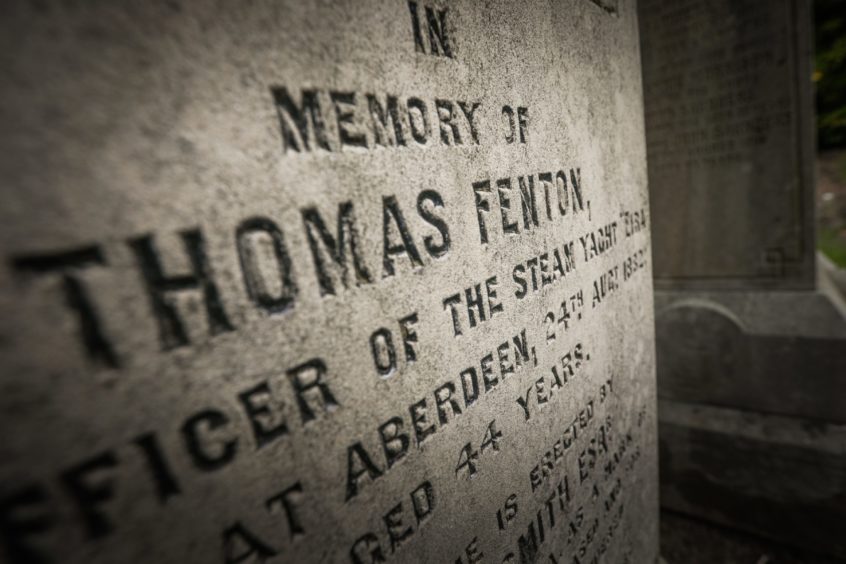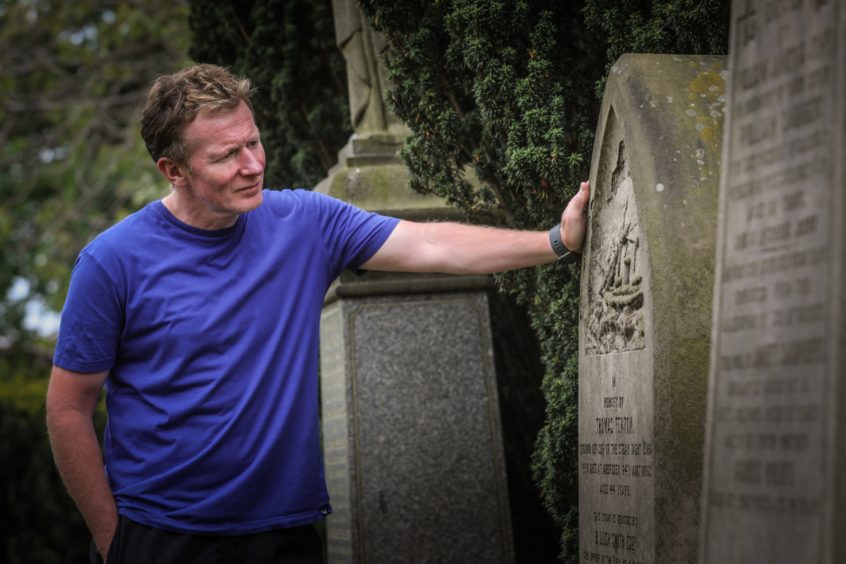The incredible Arctic adventures of the doomed Peterhead ship Eira has been frozen in time for future generations.
Benjamin Leigh Smith and Captain William Lofley led 12 men from Dundee, eight from Peterhead and one each from Aberdeen and Hull on a heroic mission of survival.
They shot 20 bears and 29 walruses to survive 10 months stranded in the Arctic before Leigh Smith led a voyage to Novaya Zemlya in June 1882 in four lifeboats with sails made from salvaged tablecloths.
Walrus tusk
The Museum of the World Ocean in Kaliningrad has 44 artefacts on display which were retrieved from the Eira that sank in a bay off the Franz Josef Land archipelago in 1881.
A bronze bracket for the ship’s compass, a bronze manometer and a walrus tusk, allegedly part of Benjamin Leigh Smith’s collection, are the most interesting exhibits.
Among them is also a piece of a rum flagon with the name of a wine and spirits shop in Peterhead where the ship was custom-built by Messrs Stephen and Forbes for Leigh Smith’s Arctic adventures.
Captain John Watson, archivist for The Fraternity of Masters and Seamen in Dundee, said the crew’s survival must be recorded as a “near miracle”.
He said: “The facts and figures of the rescue of the crew of the Eira must rank in history up there and beyond the exploits of Earnest Shackleton in the Antarctic in the rescue of the crew of the ‘Endurance’ 35 years later.
“Leigh Smith and Captain Lofley led 12 men from Dundee, eight from Peterhead and one each from Aberdeen and Hull from Cape Flora in Franz Josef Land on June 21 1882 in four ships boats, rowing and sledging 600 miles and sailing over 400 miles before rescue 55 days later in Nova Zembla on August 14 1882 and they all survived.
“What was not noted by anyone when the crew finally were landed in Aberdeen on August 20 1882 was that Thomas Clark of Peterhead, the cook’s mate was only 16, meaning he was just 15 when he joined the Eira a year before.
“What a tale he had to tell in his later life.”
Mr Watson said he was struck by the “matter-of-fact” account of Captain Lofley from Dundee who was 43.
Captain Lofley, who was the ice master on Eira, had acquired an extensive experience in Arctic navigation on the Tay in 1874, the Nova Zembla 1875-1877 and the Mazinthien in 1878.
Lost two miles from land
He said: “On the following morning the weather was fine, and there were no apprehensions of danger.
“Suddenly about eight o’clock in the morning the loose pack was driven in by the current with such violence that the ice cut into the steamer, and she immediately began to fill with water.
“She was so much damaged that there was no possibility of saving her, and the crew were at once set to work in getting out the six boats with which the ship was provided and saving clothes, the ship’s books, papers and instruments, and whatever provisions could be laid hands on.
“The cooking coppers and kettles were got on to the ice, but very little in the shape of provisions – only a little tea and a few tins of preserved meat being secured.
“The steamer sank in eleven fathoms about two hours after being nipped by the ice, and only her mast-head was visible above water.
“She was lost two miles off the land, and the crew landed on Cape Flora, about 12 miles to the eastward of Eira Harbour.”
Anticipating the long winter months ahead, they build a solid hut made from rocks, earth and wood, on a green patch, 20 feet above sea level.
Captain Lofley said: “As the season was then well advanced, and the provisions we had saved were barely sufficient to last us three weeks, no time was lost in obtaining a supply of food to serve us over the winter.
“We had shot 70 walruses and 10 bears during the passage, but these went down with the ship.
“Fortunately a number of rifles and a supply of ammunition had been saved before the ship went down, and as bears and walruses were plentiful we managed to shoot 20 bears and 29 walruses, whose flesh proved of excellent quality, and was sufficient for all our wants throughout the winter.”
Bear and walrus soup
The crew attempted to blow up the decks of the ship with gun cotton with a view to getting at the provisions, but the fuse became wet and the charge could not be exploded.
Captain Lofley said: “The house was made as comfortable as possible, and the flesh of the bears and walruses secured before winter set in upon us.
“We lost the sun on the 21st October, and did not see it again till the 23rd March this year.
“Heavy gales prevailed during most of the winter, and the snowdrifts were so heavy that the hut was buried out of sight.
“Occasionally we were disturbed by bears scraping away the snow overhead, but they never succeeded in breaking through the roof.
“For cooking and heating purposes we used the blubber of the bears and walruses, and the oil also provided us with light.
“Melted snow served us with water.
“Notwithstanding so many of us living and cooking in the hut the thermometer inside went down to zero, and the walls were covered with ice.
“Outside the thermometer registered 45 degrees below zero at which point the spirits of wine in the bulb froze, and it was calculated that there were 80 degrees of frost, or 48 degrees below zero.
“The flesh of the bear and walrus was esteemed capital food by all of us, and the blood was boiled as soup.
“There was no trace of scurvy amongst any of the men, the absence of this disease being attributed to the excellent qualities of the meat.”
To relieve the tedium of these weary months, various games were played, stories were told, and books were read to the company.
Religious services were carefully conducted with prayers on a Sunday.
Captain Lofley said: “Preparations were made for leaving Cape Flora, and on June 21 the crew in four of the boats took their departure,
“Steering in the direction of Nova Zembla in the hope of meeting some of the Scotch whaling vessels.
“To reach Nova Zembla it was found necessary, in consequence of the ice, to steer east and south, and altogether a journey of 1,000 miles was made in the boats, about 600 miles rowing and sledging, and 400 miles sailing.
“On the 14th August in 73 lat., we arrived at Matosokn Straits, on the east coast of Nova Zembla, and, to our great joy, discovered three vessels in the harbour there, which proved to be the Dutch Ship William Barentz; the smack Kara, with Sir Henry Gore Booth on; and the relief steamer Hope, under the command of Sir Allen Young.
“We first boarded the William Barentz, and were afterwards transferred to the Hope, from whose gallant commander and crew we got a most cordial reception.
Lip ulcer
The Hope bore up on the 16th August and landed us at Aberdeen on Sunday morning, when the Dundee portion of the crew, 10 in number, proceeded by train to their homes.
“The whole of the crew are in excellent health and spirits with the exception of John Crowther, the mate, and Thomas Fenton, second mate.
“The former had one of his arms rather severely injured during the voyage, and the latter, who belongs to Dundee, being ill, went to the Aberdeen Infirmary for treatment.
“It is understood that the Eira was not insured.”
One of the reasons the wreck of the Eira eluded searchers for years was because the rapidly changing landscape of the icy islands makes it hard to identify the locations seen in Mr Leigh Smith’s photographs.
The expedition’s lead diver Alexander Chechayev first began looking for the wreck in 2005.
The ship was located in 2017 after submarine video cameras spotted an object just about as large as the Eira on the seabed.
To reach it and obtain artefacts, the divers had to spend a total of 336 minutes in water that was slighter colder than freezing but remains liquid thanks to its salinity.
The story of the Eira was brought to life recently after actor Gordon Morris stumbled upon Thomas Fenton’s gravestone in Dundee’s Eastern Cemetery.
Fenton was second officer and died from a lip ulcer in Aberdeen Infirmary when the crew returned to Scotland.
He joined the Eira with a lip injury after smoking a new pipe which gave rise to an ulcer after being subsequently frost-bitten.
He was exceedingly ill when the party were brought back to Aberdeen by the Hope and was taken to Aberdeen Infirmary where he died on August 24.
